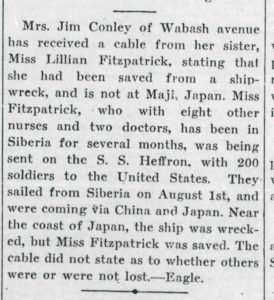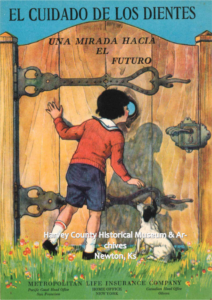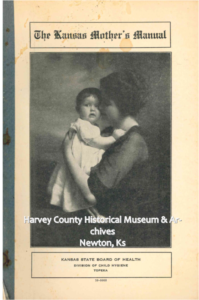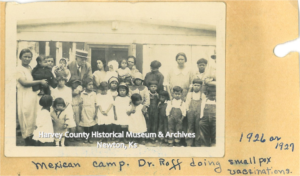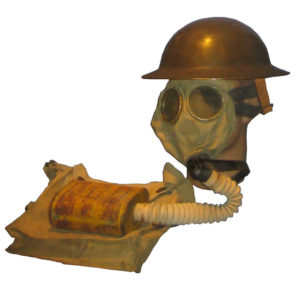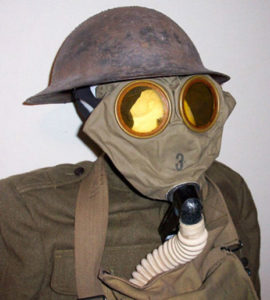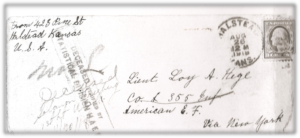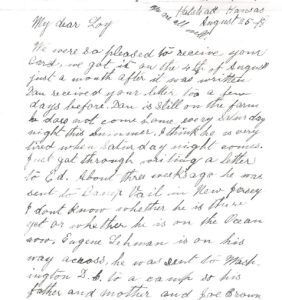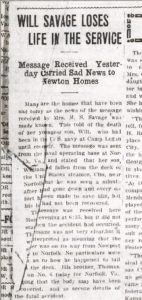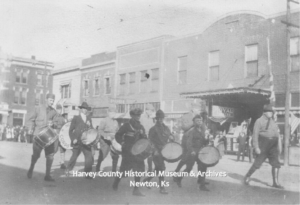by Kristine Schmucker, HCHM Curator
“Completely encircled the globe”
The Catholic Advance on January 31, 1920 reported that “Miss Lillian Fitzpatrick of St. Mary’s parish returned to Wichita after five years absence during which she completely encircled the globe.”
Early in the war, Miss Lillian went to Honlulu “to engage in public health work.” From there, she traveled as a Red Cross nurse to Siberia. While in Siberia she was “injured by a bomb thrown by a Bolshevik” while “maintaining a dressing station behind the front lines of the frigid Siberian front.” She had a permanent t reminder of the incident in the “small triangular scar on her right arm.”
After several months in Siberia, Miss Fitzpatrick was sent to Trieste, Italy in charge of 200 injured soldiers. On the way, tragedy struck, “near the coast of Japan, the ship was wrecked.” A cable was sent to a sister, Mrs. Jim Conley, reassuring family and friends that “Miss Fitzpatrick was saved.”
In a later interview, Miss Lillian described the shipwreck. Caught in a typhoon off the coast of Japan for two days and two nights and “floundered helplessly.” Rescue came just in time. Three hours later the ship “shattered on the rocks.” Following the shipwreck, Miss Lillian continued to care for the soldiers until they reached Rome, Italy. From Italy, she was sent a on special mission for the Red Cross to Paris and London. She returned to Kansas in 1920. The report in the Catholic Advance concluded the story with the note that “Miss Fitzpatrick is very tired after her long journey.”
“Adequate Medical and Hospital Treatment . . . for All Indigent Persons”
After Miss Lillian Fitzpatrick recovered from her journey, she worked as a “City Health Nurse” in Newton, Ks. One important responsibility of the City Nurse was “to see that adequate medical and hospital treatment are secured for all indigent persons.” She was expected to not only be a knowledgeable nurse or health care provider, but also be familiar with local agencies that provide assistance to those in need. The position of city nurse was “supported by public funds or by other means of a public nature.” (Evening Kansan Republican, 22 September 1922.)
One of Miss Lillian’s projects included caring for the Mexican American mothers and children that lived at the ranchito in Newton. She oversaw the building of the Mexican Health Center. Described by the Evening Kansan Republican as “a substantial and adequate building the Santa Fe railroad . . . erected for the public health work among the Mexicans of this camp.” The public was encouraged to attend an “Open House” to see the facilities and “familiarize themselves with the nature of public health work that is being done by Miss Lillian Fitzpatrick, city health nurse.” (Evening Kansan Republican, 20 October 1922.)
As City Nurse, she worked with doctors and nurses from the two hospitals to provide information and care. In connection with Bethel Deaconess Hospital “Well Baby Clinics” were held at various locations in Newton. The Evening Kansan Republican reported on several clinics held by Miss Lillian in conjunction with Sister Catherine Voth, Bethel Deaconess Hospital, and Miss Lucille Thomas, Red Cross Nurse. In September 1922, a “white baby clinic” was held. Sister Catherine spoke on malnutrition. A meeting for “colored babies and mothers” was held on a separate afternoon.
Miss Lillian also assisted Dr. Roff with small pox vaccinations at the “Mexican Camps” in the early 1920s.
After 1922-23, Miss Lillian Fitzgerald disappears from the Newton papers. By the 1940 Census, Miss Lillian, age 56, is living with her mother, Margaret, in Wichita, Ks. Lillian Fitzpatrick was born in Arizona in 1881 or 1884.*** She graduated from Pro-Cathedral School in Wichita, Ks, in June 1900. After graduation she lived in Minnesota. In 1915, she began her adventure as a Red Cross Nurse. She died in Wichita in December 1972.
***According to the 1940 Census her birth year was 1884, however the Social Security Death Index lists the birth as 23 May 1881.
Sources:
- The Catholic Advance (Wichita, Ks): 6 September 1919, 31 January 1920.
- Evening Kansan Republican, 22 September 1922, 20 October 1922.
- US Census, 1940.
- Social Security Administration. Death Master File,.


